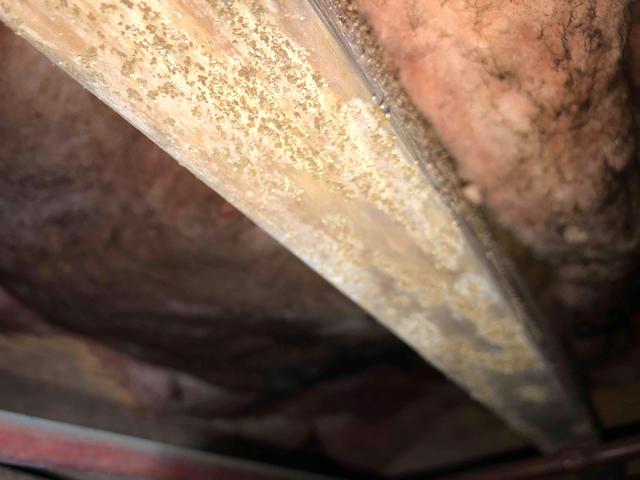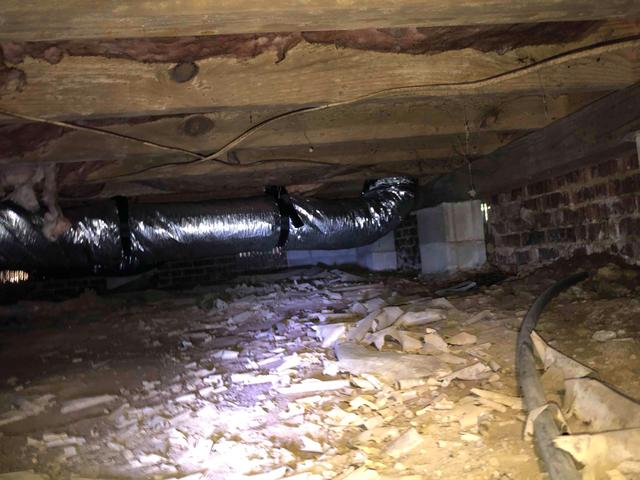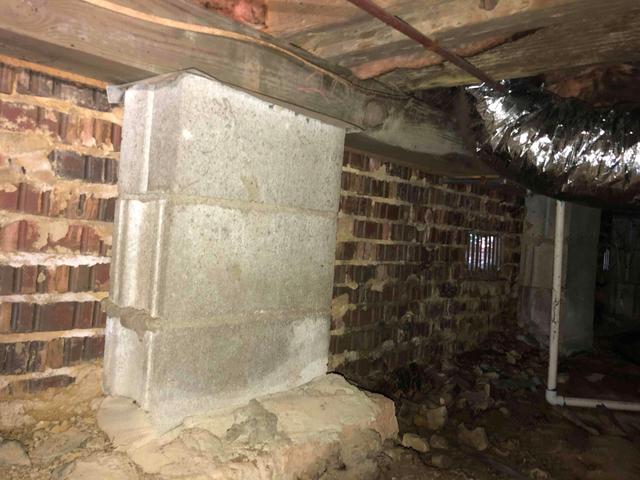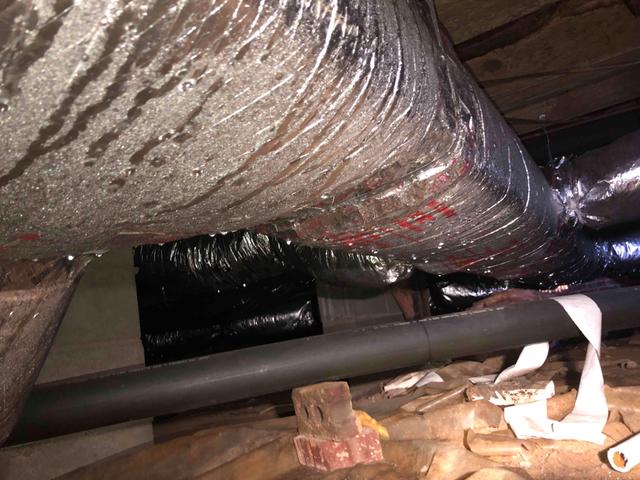
Mold and Mildew
Mold and mildew have grown on the floor joists and girders of this crawl space. Mold will thrive on any organic material within the crawl space, so long as the relative humidity is above 60% and the temperatures are around 70 degrees Fahrenheit. Musty odors and spores will often find their way up into the conditioned space of a home and can cause irritations to those with allergies and even cause asthma after prolonged exposure.

Fiberglass Insulation
Fiberglass insulation batts are often destroyed if exposed to moisture in the crawl space. It acts as a sponge, absorbing moisture and becoming too heavy to stay positioned within the floor joists. Water droplets pull apart the fine fibers of this insulation, tearing it apart, and gravity pulls the heavy chunks to the crawl space floor, adding to the debris and leaving your subfloor exposed.

Vapor Barrier
This flimsy 6-mil vapor barrier is often used within crawl spaces of homes in Virginia. However, it is not durable and is often torn apart by service people that need to work in the crawl space. Once torn, it exposes the dirt floor, allowing the earth's moisture to rise into the area above, adding to the relative humidity and increasing the chance for mold and mildew to grow

Porous Walls and Open Vents
The foundation walls of this crawl space are porous, meaning moisture and outside air can seep through and leak into the crawl. The open vents found along these walls are a gateway for outside influence to ruin the environment of the crawl space. Air and moisture can easily enter and elevate the relative humidity. The increase of moisture can lead to mold and mildew growth, and if the relative humidity reaches 100%, condensation will occur, leaving puddles and causing water damage in the crawl space.

Condensation
Condensation occurs when the relative humidity reaches 100%, and the air within the crawl space cannot hold any more water. Water droplets will form on cooler surfaces such as ductwork and pipes. Water puddles will form in the crawl space, making everything damp and dirty. Mold and mildew will thrive in this environment, and the integrity of the wood structures supporting the home will be damaged.

